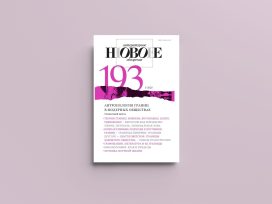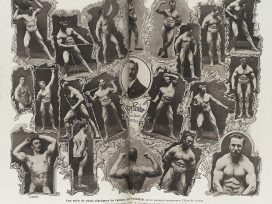Lust, violence, feuds, corruption, intrigue and romance – all the ingredients of any respectable blockbuster jostle for attention in a new film portraying the rags-to-riches story of a destitute young woman who rises to the very highest echelons of power and glory. But this heroine is no ordinary tycoon or gold-digger. She’s the Pope.
Die Päpstin tells the story of a young woman from a poor clerical family who disguises herself as a man, pursues her studies in a monastery and ends up in Rome where she’s finally elected Pope. Only when she gives birth in the street while in a procession in full papal regalia is her true identity revealed.
So far, the film has only been shown in Germany, where it was made, and in Italy where this summer it reached the top ten, just behind Robin Hood and Sex and the City 2. Frankly, it can’t really compete with either of those, for despite its sensational subject matter it’s teutonically ponderous and compulsively chronological, peopled by ciphers with no real character – not even leavened by the unlikely appearance of John Goodman as a slightly Friar Tuck-like Pope Sergius. Joan herself is played by the German actor Johanna Wokalek, who manages to confine her facial expressions to just one, applied consistently throughout, conveying, as Dorothy Parker once put it, “the gamut of emotions from A to B”. As for the crowd scenes, they mostly consist of a ragged band of wretched peasants straight out of Monty Python. But despite its feebleness, the film has already been dismissed by L’Avvenire, the newspaper of the Italian Bishops’ Conference, as “a hoax” and a film of “extremely limited vision”.
 And that’s not too surprising, really. After all, just this summer, the Vatican has pronounced that to allow women to become priests would be as sinful as child abuse. Anyone attempting their ordination will risk immediate excommunication. This new definition of the crime, part of a more general revision of serious offences against church law, including sexual abuse of children by priests, came days after the Church of England’s General Synod voted in favour of legislation to consecrate women bishops.
And that’s not too surprising, really. After all, just this summer, the Vatican has pronounced that to allow women to become priests would be as sinful as child abuse. Anyone attempting their ordination will risk immediate excommunication. This new definition of the crime, part of a more general revision of serious offences against church law, including sexual abuse of children by priests, came days after the Church of England’s General Synod voted in favour of legislation to consecrate women bishops.
So if the Vatican won’t tolerate the notion of women priests, let alone bishops, no wonder it’s touchy about any suggestion that there could ever have been a woman Pope. Indeed, the Catholic Church has long argued that since Pope Joan is not mentioned in any contemporary records, her existence is a mischievous fantasy dreamed up by scheming Protestants.
That hasn’t deterred her many supporters, though. Joan’s absence from contemporary Church records is only to be expected, according to the American writer Donna Woolfolk Cross, on whose novel, Pope Joan, the new film is based. “The Roman clergymen of the day,” she argues, “appalled by the great deception visited upon them, would have gone to great lengths to bury all written reports of the embarrassing episode.”
Her view is supported by Peter Stanford, a former editor of the Catholic Herald. “The Dark Ages really were the dark ages,” he asserts. “There is absolutely no certainty about who the Popes of the ninth century were. We have to rely instead on medieval chronicles, written hundreds of years later.” He dismisses the official Catholic view that the story of Pope Joan was a Protestant plot. There are simply far too many references to her in pre-Reformation manuscripts. Even if you accept that many of these could have been doctored later, the evidence is still convincing.
“The She-Pope’s story is recorded by some 500 chroniclers of the papacy and matters Catholic, writing from early medieval times until the end of the seventeenth century,” explains Stanford in his book The She-Pope, which sets out to uncover the truth behind the myth. Stanford’s curiosity had first been piqued when, gazing at the view of a modest square in Rome, he noticed a small shrine at the foot of a road leading to the church of Saint John Lateran. It was decorated with what he thought was a faded fresco of the Madonna and Child. On further investigation, though, he discovered that the fresco marked the spot where the legendary Pope Joan had given birth and been killed by the outraged populace and buried by the roadside. So it could well be a representation not of the blessed Virgin but of Joan with her baby. And, according to the English historian Georgina Masson, that explains why papal cavalcades will no longer pass by the shrine, taking a detour to the church rather than being tainted by the shameful association.
So Stanford set out to discover whether there could be any more evidence to support this fantastic legend. And one of his first discoveries was an oddly pierced chair, hidden away in the vaults of the Vatican Museum. According to a number of medieval accounts, the chair was used in the election ceremony for Popes. Before an appointment could be confirmed, the candidate had to sit in the chair, which has a large key-shaped hole cut in its seat. The youngest deacon present would kneel down and reach up and under the chair through the hole to verify the incumbent’s gender.
But even when he’d managed to track down the mysterious throne, enshrined in dust, Stanford was not convinced of its alleged purposed. Surely it could just as feasibly have been used for Their Holiness’s ablutions? He had to try it for himself. And once he’d actually sat in the chair and leaned back, he realised it couldn’t possibly have been used as a commode. It just wasn’t tilted at the right angle. It was this bizarre piece of furniture that set him on his quest.
Along the way, he came across endless early accounts of Joan’s life. One of the most convincing was the testimony of the Dominican Martin Polonus, writing in the thirteenth century. He arrived in Rome from his native Poland and rose to become a senior churchman, favoured by several Popes, and because of his reputation for seriousness and scholarship his writings were regarded by later generations as the quasi-official line of the Vatican. Yet even his account, Stanford acknowledges, doesn’t constitute absolute evidence of Joan’s existence. The manuscript could have been doctored, as so many others have been by subsequent generations of scribes.
Each time we’re offered another seemingly convincing piece of the jigsaw, Stanford will add the proviso – as if reminding his own excited self – that none of his discoveries counts as proof.
And he does need to keep reminding himself because, as he freely admits, he’s in danger of falling under the spell of Joan as so many others have done at different periods, and especially at times of religious turbulence. She was hailed as a heroine, for example, during the French Revolution, which was fuelled by anti-clericalism. Voltaire made reference to her in his “Essay on Morals” and Charles Bordes, a poet favoured by Jean-Jacques Rousseau, made her the centrepiece of a wickedly anti-Catholic satire on the pomp and hypocrisy of the papacy. In the years immediately succeeding the Revolution there was, according to Stanford, a whole series of comedies and vaudeville performances based on Pope Joan.
By the nineteenth century, Joan had become a figure of fascination for satirists and anti-clerical figures. The most prominent of these, in France, was Stendhal, who was struck when he went to stay in Rome that the legend still merited such fierce discussion. But he was eventually won over. “It would be pointless to argue against the existence of Pope Joan by saying that the thing was improbable,” he admitted. “The exploits of the Maid of Orleans also go against all the rules of common sense, and yet we have a thousand proofs of them.”
Meanwhile in England, Pope Joan was seized upon gleefully by anti-Papists. There were several sixpenny illustrated paperbacks offering sensational accounts of Joan’s rise to stardom. And there even a popular card game named after her. It was played on a rotating circular board divided into areas called “Pope Joan”, “Matrimony”, “Intrigue”, alongside the more familiar King, Queen and Knave. The nine of diamonds was Pope Joan.
At the end of the nineteenth century a Greek intellectual, Emmanuel Royidis, produced a novel based on the life of Joan which was clearly satirical in intent. His Joan, portrayed as an innocent abroad in the manner of Voltaire’s Candide, is a vehicle for virulent anti-clerical sentiment. It was greeted with such horror that he was excommunicated from the Orthodox Church. Lawrence Durrell, who produced a faithfully playful translation in 1954, describes it as “a masterpiece of irreverence, witty and a trifle improper… Pope Joan is a sort of brief record of the history and misfortunes of Eros after his transformation by Christianity from a God to an underground resistance movement.”
So Royidis uses his Joan – who tries so hard to be devout but is let down by her own irrepressible libido – to make fun of the hypocrisies and absurdities of the Church. “Rome,” he tells us solemnly, “having failed to conquer the world by the sword, was hard at work trying to set up a cosmocracy by other means. Instead of legions she now sent dogmas to replace them in her former provinces; quietly spinning a web in which she soon hoped to entangle all the nations.”
While detractors of religion like Royidis delighted in the shock value of the Pope Joan story, feminists have been keen to hail her as a role model, demonstrating that women really can do anything. In Caryl Churchill’s 1980s play Top Girls, for example, the heroine who is battling her way through the glass ceiling dines with a group of famous women pioneers; they include a traveller, a warrior and Pope Joan.
Foremost among feminist admirers is the historian Joan Morris, who died in 1987. A passionate documenter of the role of women in the early Church, she devoted the final years of her life to charting the existence of Pope Joan. Despite her meticulous research, and the development of an intriguing new theory about the chronology of the Papacy and Joan’s place within it, Morris died without having come to any emphatic proof. Even so, she staunchly declared herself a believer, as did so many who have found the very idea of a female Pope irresistible.
And while real evidence may be elusive, many would argue that there is nothing too implausible about the story. Plenty of women, after all, have successfully passed as men in order to achieve their ambitions – women like Dr James Miranda Barry, who in 1812 disguised herself as a man in order to gain admittance to the then exclusively male Edinburgh Medical School. She spent the rest of her life as a respected male doctor, and was only found out after she died.
In Amazons and Military Maids, Julie Wheelwright recounts the stories of women like Mary Lacey, who, in 1759, disguised herself in men’s clothes and entered the Royal Navy, where she first worked as ship’s carpenter and then became a shipwright; and Elizabeth Taylor, known as Happy Ned, who served in the American Civil War. There were women pirates like Mary Read and Anne Bonny who roamed the seas in the eighteenth century, and Grace O’Mally, the sixteenth-century Irish pirate captain.
Many of these women, according to Wheelwright, gained confidence simply by the donning of male clothing, particularly military uniform. “Trousers make a wonderful difference in the outlook on life,” declared Valerie Arkell-Smith, alias Colonel Barker. “I know that dressed as a man I did not, as I do now I am wearing skirts again, feel hopeless and helpless.”
While no such swagger would be afforded by clerical garb, the flowing robes of the Church would have been a huge advantage for monkishly inclined women. They conveniently covered any manner of bosoms, bulges, curves and even, in the case of Joan, a full-term pregnancy. In any case, argues the feminist historian Rosalind Miles, in the ninth century it would not have been difficult to get away with physical disguise because the differences between the sexes would not have been nearly as marked as they are today. “It is only in a very ample culture that men can become tall, manly and well-defined and women are voluptuous. Most of the female curves are fat. The gender distinctions would be much less clear. Women, for example, would not have beautiful moisturised skin. And if both sexes did manual labour in childhood, they would both be brawny.”
Even the lack of facial hair would not have posed much of a problem. It was at around the time that Joan took up her disguise that priests began to shave off their beards, on papal orders. So a smooth-chinned monk would not have been that remarkable. Rosalind Miles goes further, suggesting that given the deprivations of monastic life, Joan might well have developed a facial “pelt”, rather as starving women and anorexics may do.
There is also a common theory that the more men have sex, the faster their beards will grow. That, presumably, is why so many men of the Church seem to have such smooth, shiny faces. And Joan’s hairless cheeks might simply have been taken as a sign that she was more observant of the strictures of celibacy than so many of her licentious medieval fellow-clerics.
So however farfetched the existence of a female Pope may at first seem, it is very far from impossible. Indeed, Stanford himself concludes that there is simply too much evidence to dismiss her as a fabrication. “The evidence of some 500 medieval writers cannot but impress. Senior papal servants, writing in books dedicated to their masters, endorse Joan unambiguously. Academics and inquisitors accept her as fact. Such widespread belief, filtering up to the pinnacle of power in the Catholic Church, cannot lightly be dismissed as a Protestant plot, a fable, or a cipher for some other story of papal skullduggery.”
Moreover, he adds, it is significant that, despite all attempts to kill her off, Pope Joan keeps cropping up in our own times. “People believe in her and go on believing in her because they want her to have happened.”
Unlike Stanford, Rosalind Miles is bothered less about the veracity of Joan’s story than about the potency of the myth she represents. “Joan’s story – or at least the ending – could well be a fiction by men, proving the point that for every culture there is a counter-culture. And in as much as the Church loves and needs the Pope, it must also hate and resent the Pope because that is the way it works. A strong Papacy is bound to throw up a strong counter-culture – in this case Joan.”
So while Joan remains a powerful champion of independence and success for feminists, her sorry ending can also be read as a warning to women not to over-reach themselves. “Through Joan,” Stanford remarks, “womankind as a whole was labelled lustful, deceitful and unfit for any authority.”
And the feminist novelist Sara Maitland sees the invisibility of Joan, the very lack of hard information about her life, as a clue to the strength of her story. She compares her with another highly controversial cross-dresser, Joan of Arc. “She is a good example of someone about whom we have all the information we want – in the trial documents. But still she is open to any reading you want. Hers is such a real voice. Pope Joan, by contrast, has no voice – and part of her attraction is precisely that – that like other women in history she has no voice but this time we know just enough to attempt to give her one.”
While no one will ever be able to verify the details of Joan’s life, she remains a myth in its original sense – as an illustration of truth through events which may be partially true but, through telling and retelling over centuries, are embellished beyond recognition. After all, the very idea of a woman rising to the highest office within a Church that has denied us even the most basic of rights is irresistible. So much so that if Pope Joan didn’t exist God would have had to invent her. Wouldn’t she?

 And that’s not too surprising, really. After all, just this summer, the Vatican has pronounced that to allow women to become priests would be as sinful as child abuse. Anyone attempting their ordination will risk immediate excommunication. This new definition of the crime, part of a more general revision of serious offences against church law, including sexual abuse of children by priests, came days after the Church of England’s General Synod voted in favour of legislation to consecrate women bishops.
And that’s not too surprising, really. After all, just this summer, the Vatican has pronounced that to allow women to become priests would be as sinful as child abuse. Anyone attempting their ordination will risk immediate excommunication. This new definition of the crime, part of a more general revision of serious offences against church law, including sexual abuse of children by priests, came days after the Church of England’s General Synod voted in favour of legislation to consecrate women bishops.




